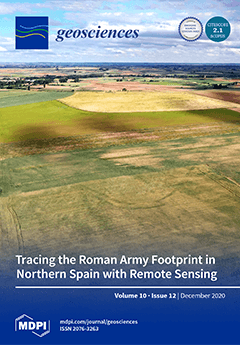The M
S 6.9, 1980 Irpinia earthquake occurred in the southern Apennines, a fold and thrust belt that has been undergoing post-orogenic extension since ca. 400 kyr. The strongly anisotropic structure of fold and thrust belts like the Apennines, including late-orogenic low-angle normal
[...] Read more.
The M
S 6.9, 1980 Irpinia earthquake occurred in the southern Apennines, a fold and thrust belt that has been undergoing post-orogenic extension since ca. 400 kyr. The strongly anisotropic structure of fold and thrust belts like the Apennines, including late-orogenic low-angle normal faults and inherited Mesozoic extensional features besides gently dipping thrusts, result in a complex, overall layered architecture of the orogenic edifice. Effective decoupling between deep and shallow structural levels of this mountain belt is related to the strong rheological contrast produced by a fluid-saturated, shale-dominated mélange zone interposed between buried autochthonous carbonates—continuous with those exposed in the foreland to the east—and the allochthonous units. The presence of fluid reservoirs below the mélange zone is shown by a high V
P/V
S ratio—which is a proxy for densely fractured fluid-saturated crustal volumes—recorded by seismic tomography within the buried autochthonous carbonates and the top part of the underlying basement. These crustal volumes, in which background seismicity is remarkably concentrated, are fed by fluids migrating along the major active faults. High pore fluid pressures, decreasing the yield stress, are recorded by low stress-drop values associated with the earthquakes. On the other hand, the mountain belt is characterized by substantial gas flow to the surface, recorded as both distributed soil gas emissions and vigorous gas vents. The accumulation of CO
2-brine within a reservoir located at hypocentral depths beneath the Irpinia region is not only interpreted to control a multiyear cyclic behavior of microseismicity, but could also play a role in ground motions detected by space-based geodetic measurements in the postseismic period. The analysis carried out in this study of persistent scatterer interferometry synthetic aperture radar (PS-InSAR) data, covering a timespan ranging from 12 to 30 years after the 1980 mainshock, points out that ground deformation has affected the Irpinia earthquake epicentral area in the last decades. These ground motions could be a result of postseismic afterslip, which is well known to occur over years or even decades after a large mainshock such as the 23 November 1980, M
S 6.9 earthquake due to cycles of CO
2-brine accumulation at depth and its subsequent release by M
w ≥ 3.5 earthquakes, or most likely by a combination of both. Postseismic afterslip controls geomorphology, topography, and surface deformation in seismically active areas such as that of the present study, characterized by ~M 7 earthquakes. Yet, this process has been largely overlooked in the case of the 1980 Irpinia earthquake, and one of the main aims of this study is to fill such the substantial gap of knowledge for the epicentral area of some of the most destructive earthquakes that have ever occurred in Italy.
Full article





